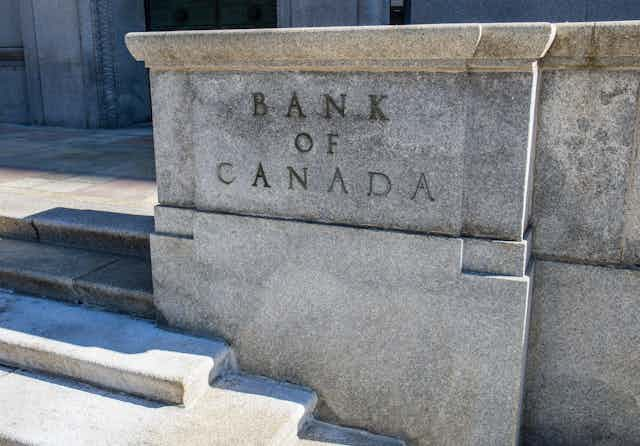The Bank of Canada is preparing for the possibility of the Canadian government requiring it to issue a digital version of the Canadian dollar. Although the central bank is leading the project for the new currency, any future decision to issue it rests with the Canadian Parliament and government.
As a part of this process, the central bank recently concluded a public consultation on June 19 where it sought input from Canadians about the possibility of a national digital currency.
If the Bank of Canada were to issue the digital dollar, it could have significant implications for how Canada tackles future financial challenges.
However, we must not overlook the important democratic concerns associated with this currency. For the sake of our democracy, and to maintain trust in the Bank of Canada and this new digital dollar, these concerns must be addressed before a decision to issue this money is made.
Mitigating financial risks
The digital Canadian dollar is important for mitigating two potential future threats: the mass adoption of external currencies and the next financial crisis.
Most of the digital money in our economy is commercial bank money that’s created mainly through loans. This money can be risky during bank runs, which occur when everyone tries to withdraw money at the same time, rendering commercial banks vulnerable to insolvency.
A currency backed by the central bank could provide a more reliable alternative to this commercial bank money.
Introducing the digital Canadian dollar could also lower the likelihood of mass adoption of alternative digital currencies, like cryptocurrencies and privately issued currencies. Such a scenario would undermine the Bank of Canada’s ability to control the country’s monetary policy. Prevention is better than a cure.
In the face of these two scenarios, a digital Canadian dollar would ensure stability and monetary sovereignty.
A promise for a better future
The digital Canadian dollar has the potential to pave the way for a more promising future by bridging the present with the infinite digital possibilities of tomorrow.
It would serve as an alternative to existing commercial payment methods while seamlessly integrating with electronic payments and other innovative aspects of the digital economy.
Additionally, the ability to digitally trace transactions promotes a safer society by assisting in the fight against money laundering, crime and terrorism.
In some visions of central bank digital currencies, it is possible to program the money and incorporate social policies directly into it.
This could mean, for example, that specific populations or regions could receive better interest rates to promote economic equity, or automatically subsidize essential goods and services to low-income households or senior citizens.

Since transactions are digital, it is possible to envision a future in which the Canada Revenue Agency could also use the digital currency to combat the underground economy and automate tax collecting.
Together with another digital revolution — that of AI — it is easy to imagine insights gained from the enormous amounts of data.
The dark side of the digital dollar
Implementing this new digital currency, despite its potential benefits, could introduce several risks to our democracy. We risk paving the way for a future government taking control of our financial data.
Digital currencies can be programmable by being assigned functions to operate only under certain conditions. This could eventually lead to an economy controlled by the government at an individual level. The government would be able to monitor its citizens, determine how money can be limited and used, identify political dissidents and take action against them.
The Canadian government has already proved it is willing to use financial tools against protestors. Moreover, centralized digital infrastructures are inherently vulnerable to software updates that could override initial safeguards. Issuing a central bank digital currency may be a point of no return.
While the Bank of Canada’s consultation is a step in the right direction, the current information about the digital Canadian dollar fails to address the risk of a future government exercising greater authority in this digital domain.
Mitigating concerns and building trust
Democratic concerns must be a part of the discussion about a national digital currency. Similar worries about privacy, surveillance and national digital currency were also raised in the European Union, the United States and elsewhere.
Launching the digital Canadian dollar is a political decision, not a technological one. Ensuring freedom is the same. For the digital Canadian dollar and the Bank of Canada to be trusted, these worries must be addressed and mitigated. If the decision to issue this digital money is made, it needs to be done in a responsible manner.
It is essential to raise awareness about the potential misuse of the digital Canadian dollar and carefully assess its impact on Canadian democracy and civil liberties. Unlike the current suggested version, safeguards must be part of the digital Canadian dollar package. What these safeguards are is a discussion we should urgently have.

